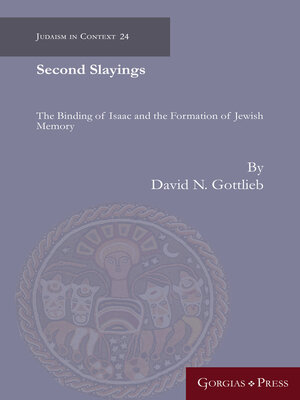Second Slayings
ebook ∣ The Binding of Isaac and the Formation of Jewish Cultural Memory · Judaism in Context
By David Gottlieb

Sign up to save your library
With an OverDrive account, you can save your favorite libraries for at-a-glance information about availability. Find out more about OverDrive accounts.
Find this title in Libby, the library reading app by OverDrive.



Search for a digital library with this title
Title found at these libraries:
| Loading... |
This work is a study of Jewish cultural memory as exemplified by rabbinic midrash of the Amoraic period, the second through fifth centuries of the Common Era, and especially midrash on the Akedah, the Binding of Isaac (Gen. 22:1–19). The Akedah is proposed and analyzed as a model for submission to the divine will through the act of interpretation. Rabbinic exegetes adopt and adapt interpretive stances modeled in the Akedah as a strategy for cultural reorientation and renewal in the wake of the destruction of the Second Temple in 70 CE. The rabbis construct a framework for cultural memory that relies on mimetic acts of interpretive substitution that are employed to confront, interpret, and remember ruptures as evidence of divine care. This form of memory is termed midrashic memory, which is proposed as inherent to rabbinic textual interpretation and whose origins are traced to the Akedah narrative itself. Midrashic memory is analyzed in selections from Amoraic midrash in Shalom Spiegel's twentieth-century masterwork on the Akedah,The Last Trial,andproposed as the crux of a theory and taxonomy of Jewish memory. The project concludes with a theory and taxonomy of Jewish memory and an interpretation of the Akedah as metonym for cultural reorientation through the reharmonization of the lived, or 'temporal', and the covenanted, or 'anamnestic', planes of experience.






